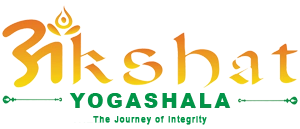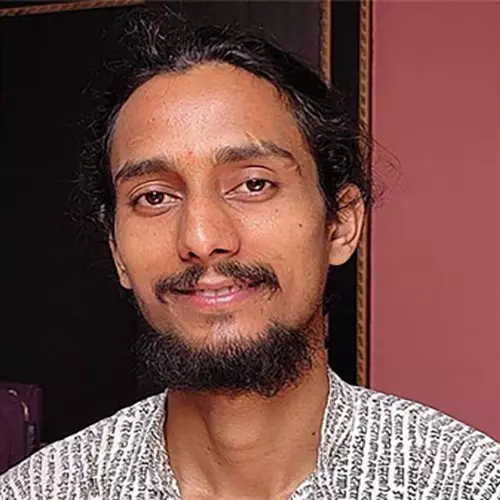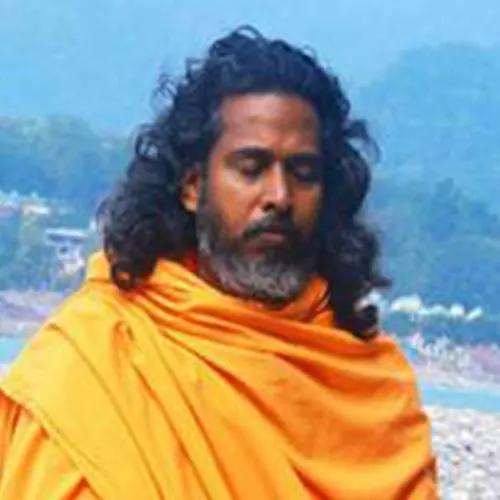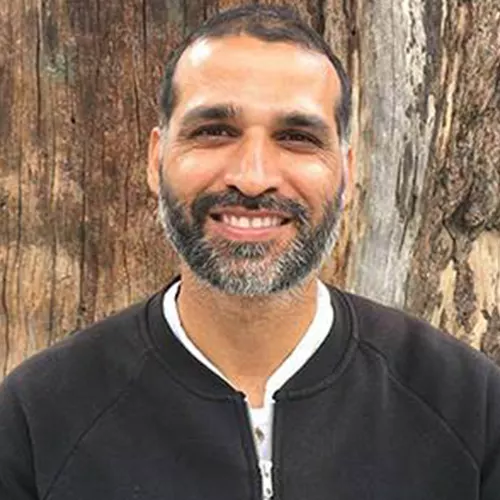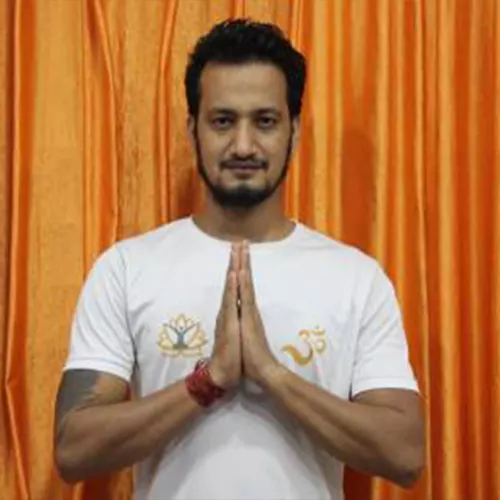200 hour yoga teacher training
Rishikesh, INDIA
200-Hour Yoga Teacher Training in Rishikesh India by AKSHAT YOGASHALA is the course, chosen by practitioners of almost all levels. You can start the course from the Beginner level and can practice it even if you hold good knowledge.
The yoga teacher training of 200 Hours in Rishikesh is the best course for you to practice and to start your own career in the field of yoga. Not just beginners, but even advanced-level practitioners can join the 200 hours YTTC in India.
YOGA TTC IN RISHIKESH
Yoga Teacher Training 200 Hour in Rishikesh India.
If you’re looking to become a certified yoga teacher, Akshat Yogashala’s 200 Hour Yoga Teacher Training in Rishikesh, India is the perfect course for you. Our program is designed for practitioners of all levels, whether you’re a beginner or an experienced yogi looking to enhance your knowledge and skills.
Our comprehensive 200 Hour Yoga Teacher Training in Rishikesh, India covers everything you need to know to become a successful yoga teacher, including asanas, pranayama, meditation, yoga philosophy, anatomy, and teaching methodology. By the end of the program, you’ll be equipped with the skills and knowledge to confidently lead yoga classes and help others on their yoga journey.
Our 200 Hour Yoga Teacher Training in Rishikesh, India is the ideal starting point for anyone looking to launch a career in yoga. The course is structured to help you develop your personal and professional skills, providing a strong foundation for your journey as a yoga teacher. With our expert guidance, you’ll be able to hone your skills and progress to more advanced levels of learning.
Enroll in our 200 Hour Yoga TTC in Rishikesh, India today and take the first step towards a fulfilling and rewarding career in yoga. At Akshat Yogashala, we’re committed to providing you with the best possible education and support as you embark on this journey.
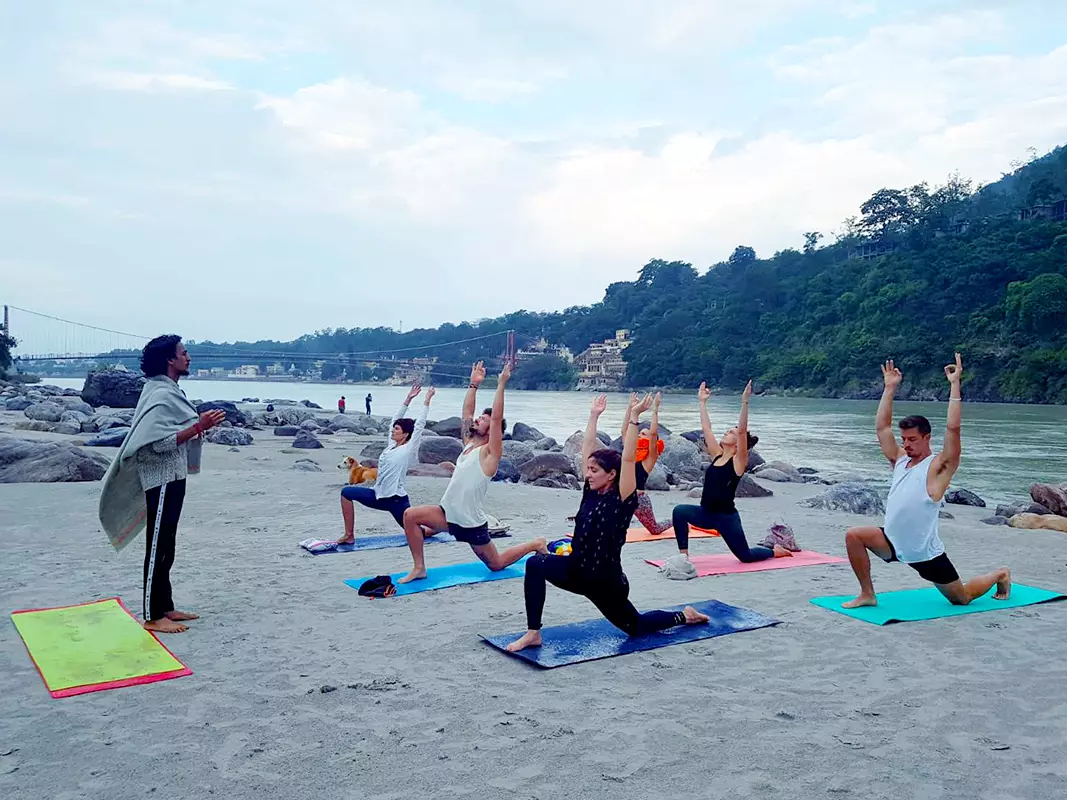
Yoga Teacher Training Syllabus
Traditional Hatha Yoga Teaching from Nath Parampara (Tradition)
It is said that the Hatha yoga lineage evolved with the Natha sampradaya(community) and it follow shaivism, according to Hatha yoga tradition lord shiva is known as first yogi or adiyogi, according to yogic mythology shiva shared this knowledge of yoga first with his wife goddess parvati. It is said that these teachings of Hatha yoga came in existence around 5 to 7 thousands years ago, but it has not any exact proof it is just based on yogic mythology.
Natha word also comes with shiva, the Sanskrit word nātha नाथ literally means “lord, protector, master”. The related Sanskrit term Adi Natha means first or original Lord, and is a synonym for Shiva, the founder of the Nāthas and that’s why shiva is also known as adinatha, so this tradition passed by the yogis named Matshyendranatha, Gorakshanatha, charpatinatha, one of the great notable hatha yogis who attained the higher state of conciousness and actually this natha term signifies that lineage, which began with adinatha.
The Sanskrit word हठ haṭha literally means “force”, alluding to a system of physical, mental and emotional techniques. But the question is what type of force??, often people misunderstood hatha meaning they think it means to doing hatha yoga practice forcefully, which is not truth at all, the idea of hatha yoga practice is to attain force physically and mentally. How???
Hatha is made up of 2 words “HA” and “THA”, according to Hatha yoga a human body has two parts right and left side of spine. Right body is related with “Ha” and(solar energy) and Left body is related with “Tha” and (lunar energy). The aim of practicing Hatha yoga is to attain balance of prana (vital energy) by synchronizing both solar and lunar energy in nadis.

Asana Practice Sessions Yoga Teacher Training 200 Hour in Rishikesh India
The Asanas practice session of the Yoga TTC in Rishikesh covers different concepts of the body, mind, and soul. The students are taught how to practice the Asanas in a proper way. They are also taught about the benefits of the Asanas. The students are given a list of the Asanas that they need to practice. The Asanas practice session of the Yoga Teacher Training 200 Hour in Rishikesh India is conducted by the experienced teachers who have been practicing the Asanas for a long time. With the yoga teacher training of 200 hour in Rishikesh, you will learn and practice different asana series. Also, warm-up practice to many different postures gets covered in Rishikesh Yoga Course.
| Warm up practice Pawanmuktasana series Marjari kriya Vyaghrasana Surya Namaskar Standing yoga posture Tadasana Triyak tadasana Padhastasana Utkatasana Trikonasana Parsva konasana Veerbhadrasana 1 Veerbhadrasana 2 Veerbhadrasana 3 Ardha badha padmottanasana Vrikshasana Twisting yoga posture Ardha matsyendrasana Parivritta janusirshasana Kati chakrasana Vakrasana |
Backward bending yoga posture Bhujangasana Shalabhasana Dhanurasana Matsyendrasana Ushtrasana Kandhrasana Chakrasana Gomukhasana Setu asana Rajkapotasana Seated yoga posture Paschimottanasana Janusirsasana Ardha padma paschimottanasana Pad prasar paschimottanasana Balanching yoga posture Baka dhyanasana Mayurasana Natrajasana Garudasana |
Meditative asana Sukhasana Siddhasana Padmasana Svastikasana Bhadrasana Inverted posture Semi inverted posture Relaxation yoga posture |
Traditional Ashtanga Vinyasa
Ashtanga Vinyasa Yoga is a separate subject dealing with the information of yoga. It is actually a tradition that has been followed by people for ages. There is a little similarity in the asanas or postures of Ashtanga Vinyasa Yoga and Hatha Yoga, though the names might be different.
Akshat Yogashala offers 200-Hour Yoga Teacher Training in India with the proper knowledge of Traditional Ashtanga Vinyasa Yoga. The course is designed for beginners as well as advanced students. The course is designed to provide a complete understanding of the Ancient science of yoga. The course covers all the aspects of yoga, from its history and philosophy to its practical application. The course is conducted in the serene and beautiful environment of Rishikesh, India.
The word Pranayama is derived from two words of Sanskrit grammar ‘Prana’ and ‘Ayam’. The word Prana in Sanskrit is derived from the root ‘An’ with the prefix ‘Pra’. The ‘Un’ metal signifies vitality. Thus the word ‘Prana’ means the power of consciousness. The word ‘Ayama’ means to regulate. In this way, the method of controlling prana by regulation of external breathing, special breathing techniques to control prana and acquiring the ability to take subtle and long breaths, is called pranayama.
Maharishi Patanjali explained Pranayama in his book
तस्मिन् सति श्वास प्रश्वास योग वि विच्छेदः प्राणायामः (Yoga Sutra 2/49)
tasmin sati shvasaprashvasayorgativichchhedah pranayamah (Yoga Sutra 2.49)
Meaning: The regulation of the natural movement of breath and exhalation when the matter is stable, is Pranayama, says Patanjali. Through the practice of Pranayama, the veil of impermanence gets weakened and the ability to dharna comes.
The 200 Hour Yoga Teacher Training in India explains the following Elements of Pranayama.
Pancha Prana – There are five major pranas in Pranayama which are known as Pancha Prana. These five pranas are Prana, Apana, Samana,
Udana, and Vyana.
Pancha Upaprana – Pancha Upaprana are the five supporting elements of pancha prana which are Naga, Kurma, Krikala, Devadatta, and
Dhananjaya
Natural and Yogic Breathe – Yogic way of breathing calms the nervous system and helps the mind the most. In this, the time of exhalation is
longer than inhalation.
Puraka, Rechaka and Kumbhaka – Maharishi Patanjali has mainly given three distinctions of Pranayama.
- Rechaka – It is the process of exhalation of breathing in Pranayama.
- Puraka – Puraka is inhalation of breathing in Pranayama.
- Kumbhaka – Kumbhaka is about retaining or holding the breath during the process of Pranayama. There are two types of Kumbhaka Pranayama,
Antara Kumbhaka – Also known as the inner Kumbhaka, it is the
retention of breath after inhalation.
Bahya or Bahir Kumbhaka – Also known as the outer Kumbhaka, it is the retention of breath after exhalation.
Nadi Shodhana – Nadis are the energy channels of the body. When one performs Nadi Shodana pranayama, nadis get purified and the prana
energy starts flowing in these channels.
Anulom Vilom – An alternate nostril breathing, Anulom Vilom is done to balance the life force energy or pranic energy.
Bhastrika – Bhastrika is a rapid pranayama process which involves fast inhalation and exhalation. The same round is repeated many times.
Ujjayi Pranayama – First of all sit in any meditative posture. Keep the waist and neck straight. Breathe through both nostrils by compressing
the throat so that the sound (like of a small child’s snort, waves) is produced slowly. After that, do Kumbhaka for as long as possible, then
make Pranava mudra of Pranayama and exhale slowly from the left nostril. Repeat this action over and over again. This is known as Ujjayi
Pranayama.
Surya Bhedi – Suryabhedan is the first pranayama in Hathapradipika. It is right-nostril breathing. With the help of this pranayama, solar energy
gets activated in our bodies.
Chandra Bhedi – It is left-nostril breathing related to Chandra Nadi or the Moon Channel of the body. With the help of this pranayama, lunar
energy gets activated in our bodies.
Sheetali – It is also known as Cooling Breath. The meaning of Sheetali is that the meaning of saying coolness is that by doing this pranayama, the
body gets coolness. That is why it is called Sheetali Pranayama. This type of pranayama is like a tree providing plenty of oxygen. Also, the pranayama is beneficial in giving peace and coolness and so can be done in the
summer season.
Sheetkari – The meaning of Sheetkari means coolness, which means something that cools our body and mind. When you do this type of pranayama, the sound of the word ‘Sheet’ has to come out of the mouth.
Bhramari – Bhramari Pranayam is a special method of breathing meditation in which sound like a bee is also practiced.
Yoga Teacher Training 200 Hour in Rishikesh India.
कर्म षटकमिदं गोप्यं घटशोधनकारकम्।
विचित्रगुणसंधायि पूज्यते योगिपुंगवैः।। (Hatha Yoga Pradipika 2/23)
karma ṣhaṭkamidaṃ ghopyaṃ ghaṭa-śodhana-kārakam |
vichitra-ghuṇa-sandhāya pūjyate yoghi-pungghavaiḥ ||
Chapter 2, Verse 23 of Hatha Yoga Pradipika says that only after the purification of the body, the seeker is successful in getting rid of the internal wastes. Before Pranayama, their need has also been said because it is not possible to get success in sadhana due to the lack of circulation of life in the Nadis filled with faeces.
In the olden times, six types of Kriya were done to make the body healthy and to do the high practice of Pranayama and Asana. The yogi could purify the body internally as well. These six types of action are called Shatkarma (Shatkriya). In Hatha Yoga Pradipika, it is depicted in the form of Kriya.
These Shatkarma Techniques are:
- Dhauti
- Basti
- Neti
- Nauli
- Trataka
- Kapalbhati
All these actions are associated with different parts of the body. By doing these, the body is completely purified internally. Now we share a little information about all these techniques with you, which is easy to understand.
Dhauti – Dhauti is a Sanskrit word that means “purification”. It is
derived from the root word “dhau” which means “to wash.” Dhauti
Kriya is specially performed for the complete cleansing of the internal
body system. It is of four types namely, Antara (internal) Dhauti, Danta
(teeth) Dhauti, Hrida (cardiac or chest region) Dhauti and Mula
Shodhana (rectal cleansing).
Basti – The large intestine and rectum are purified through basti kriya.
It is helpful in removing the stuck waste food material in the hollow part
of the intestine. In simple terms, Basti Kriya cleanses the extra waste
material from the body. The modern name for basti kriya is Enema.
There are two types of Basti, Jala Basti, and Sthala Basti.
Neti – The main purpose of this action is to purify the nasal passages. By doing this, the impure and blocked nostrils will open completely. Due to this the irregularity of breathing is removed. That is why it is also called a nasal cleansing exercise.
Nauli – Nauli is considered a difficult exercise, which can only be learned with perseverance and patience. Nauli is an essential action for the purification and toning of the stomach and its internal organs.
Trataka – Trataka Kriya is related to the eyes. It improves eyesight and increases focus. It is useful in mental concentration. It should be started with candlelight in the beginning. There should be a distance of around 2 meters between the eye and the law of the candle.
Kapalbhati – Kapalbhati is a part of the yoga system pranayama which is used to cleanse the body. The word Kapalbhati is made up of two words: Kapal means ‘forehead’ and Bhati means ‘sign’. The brain is well affected due to the process.
Yoga Darshan is a practical and psychological form of philosophy for the spiritual, mental, and physical development of human life by combining the existence of nature, man, and God. It states that the body, mind, and soul can’t be separated.
Six Orthodox and Two Unorthodox Philosophy
With the 200-hour Yoga Teacher Training in India, the six orthodox philosophy or Shad Darshana that gets covered are Sankhya, Yoga, Nyaya, Vaisheshika, Mimamsa and Vedanta.
Talking about unorthodox philosophies, they are Buddhism, Jainism, and Charvaka.
Origin of Yoga
The origin of yoga dates back to ages ago when Shiva, the first yogi discovered it and transfer the same knowledge to Goddess Parvati. Then Shiva taught sapta rishis or the seven sages who propagate it to the different parts of the world. So, they are considered the founders of the divine practice.
Purushartha Chatusthaya (Four Goals of Human Life)
Purushartha describes four goals of human life, that is, Dharma (Moral Values), Artha (Prosperity), Kama (Pleasure), and Moksha (Liberation).
Different Paths of Yoga
There are different paths of yoga that are Karma Yoga, Bhakti Yoga, Raja Yoga, and Jnana Yoga.
Ashtanga Yoga (Eight Limbs of Yoga) and Hatha Yoga
There are eight limbs of yoga namely, Yama (Abstinences), Niyama (Observances), Asana (Yoga Postures), Pranayama (Breath Control), Pratyahara (Withdrawal of the Senses), Dharana (Concentration), Dhyana (Meditation), and Samadhi (Absorption).
Supportive Element in Yoga (Sadhak Tattva)
Utsaah (Enthusiasm), Sahas (Courage), Dherya (Patience), Tatvagyaan (Philosophy), Dridh Nischay (Determination), and Jansang (Renunciation) are the Sadhak Tattva in Yoga.
Obstacle Element in Yoga (Badhak Tattva)
अत्याहार: प्रयासश्चप्रजल्पोनियमाग्रह:।
जनसंएरचलौल्यचषड्भिर्योगोविनश्चति।।
atyāhāraḥ prayāsaścha prajalpo niyamāghrahaḥ. jana-sangghaścha laulyaṃ cha ṣhaḍbhiryogho vinaśyati.
Hatha Yoga Pradipika states the six obstacle elements of yoga or Badhak Tattva. These are Atyaharah (Eating more than required), Prayasascha (Doing lots of Hard Work), Prajalpo (Talking much), Niyamagrahah (Not following the rules), Jana Sangghascha (Getting in touch with many people), and Laulyaṃ (Fickle Mind).
Teaching of Vedanta
The Teaching of Vedanta says that God is infinite, he is existing in eternity, having infinite consciousness, and providing ultimate bliss.
5 Sheaths of Body (Pancha Kosha)
Pancha Kosha or five sheaths of the body are the layers surrounding your soul. These are –
- The Annamaya Kosha
- The Pranamaya Kosha
- The Manomaya Kosha
- The Vijnanamaya Kosha
- The Anandamaya Kosha
The yoga teacher training in Rishikesh explains the Anatomy and Physiology of the Human Body. The Anatomy class describes the structure of the body and the physiology class describes the functioning of the body.
The Anatomy class of the yoga teacher training in Rishikesh connects modern science with yogic science and explains the core of yoga. The 11 systems of the body get covered in it.
These are The Integumentary System, Nervous System, Skeletal System, Endocrine System, Muscular System, Cardiovascular System, Lymphatic System, Respiratory System, Urinary System, Reproductive System, and Digestive System The session on anatomy and physiology gives a general idea of the composition and constitution of the human body.
It is the self-healing procedure of the body, especially with the elements present around us in nature. It is a scientific and holistic system at the same time, awakening the inherent power of the body to regain its health and fitness. It further helps in treating various diseases and illnesses.
At Akshat Yogashala, the theoretical classes of yoga ttc in Rishikesh explains the concept of Panchamahabhutas.
“SARVAM DRAVYAM PANCHABHOUTIKATVAM”
Meaning – All things present on the earth are formed by Panchamahabhutas.
These Panchamahabhutas are Earth, Water, Fire, Air, and Ether. These are also the foundational constituents of the body.
The Naturopathy session at Akshat Yogashala during the 200-hour yoga ttc in Rishikesh provides Mud Therapy. It uses moistened earth in the right way to heal the body.
Mantra is the divine accumulation of words, by which we can attain extreme spirituality and destroy negative obstacles. “Man” in Mantra means “Mind” and “Tra” means “Power”.
Mantra Reciting
Reciting the mantra helps the person in getting supreme knowledge and with this, the mind gets calm. With this, one gets free from the bondage of birth and death.
Types of Mantra
There are mainly three types of mantras. These are –
- Bija Mantra (Root Mantra) – It connects you to the seven chakras of the body and Hindu deities.
- Saguna Mantra (with form) – It awakens the actual form of a particular type of deity.
- Nirguna Mantra (without form) – It covers the fundamental truths mentioned in yogic philosophy.
The course of Yoga Teacher Training 200 hour Rishikesh India at our yoga school explains the following types of mantras, Obstacle removal mantra Guru mantra
- Pranav mantra
- Teacher and student mantra
- Mantra for peace
- Patanjali mantra
- Maha mritunjaya mantra
- Realization mantra
- Food mantra
- Completeness mantra
Meditation or Dhyana is a self-development technique that has been practiced around the globe for ages. There is no aspect of your life that cannot be improved through meditation, be it business, relationships, or health. But the highest aim of meditation is to recognize one’s own divinity. Meditation is done to know your true self.
Obstacle in Meditation
It sounds so easy when you read about Meditation. But it is not as easy as you think. To be a master in meditation, you have to go through many hurdles or obstacles but don’t worry, we will help you in overcoming all of them.
Role of Asana and Pranayama in Meditation
There are many asanas that are preferred most while practicing Meditation. The reason is it gives maximum benefits. Padmasana or Lotus Pose is the best posture to do meditation. The same goes with Pranayama, when do pranayam before the start of Meditation then you are able to focus properly on the task.
Pranava Sadhana
The ancient Hindu texts such as The Bhagavad Gita, The Upanishads, and The Patanjali Yoga Sutras mentioned Pranava sadhana as the meditation with chants of Om. That is why it is also called Aum Yoga Meditation.
Chakra Meditation
There are seven chakras located in the human body. When they are balanced then a person remains healthy. Chakra Meditation is done to balance chakras or the energy centers of the body.
Five Element Meditation (Pancha Tattva Dhyana)
There are five elements present in nature and all living organisms, i.e. Prithvi (Earth), Jal (Water), Agni (Fire), Vayu (Air), and Aakash (Ether). These 5 elements are comprising our bodies and minds as well. With the meditation of these, we are able to make the right balance inside ourselves.
Full Moon Meditation (Purnima Dhyana)
The Moon is connected directly to various spiritual deeds or practices. The Full moon meditation is perfect to refresh the body, mind, and soul. It is done by sitting under the moonlight in the east or west direction.
Breathe meditation (Anapana)
Entry-level meditation provides you with instant relaxation and releases stress with the simple process of keeping attention on your breath.
Guided Meditation
Guided Meditation is done at the command of another person. Our mind focuses better when someone is asking us to do a particular thing. Just like, when you listen to songs, podcasts, and so, then you get into deep rest and relaxation.
Nachiketa Dhyana
Nachiketa Dhyana is an essential type of meditation that is performed to achieve progress in life.
Vipassana Meditation
The term “Vipassana” means to look into reality. This form of meditation observes the thoughts, feelings, and emotions of one without making any judgment. It is the best type of mindfulness practice.
Yoga Nidra
Yoga Nidra, also known as “Yogic Sleep” is a type of effortless relaxation where you are said to lie down, after which the teacher guides you to perform it.
Trataka
“Trataka” means “to gaze”. It is also a type of Shatkarmas practice where you have to sit at a particular distance from the candle and you need to gaze continuously at the tip of the flame.
Mantra Meditation
Mantras have the power to heal you from within. When you chant any mantra, you discover a positive aura around you which helps you in rejuvenating your body, mind, and soul.
Yoga Teacher Training Course Daily Schedule
AKSHAT YOGASHALA 200-Hour teacher training program’s schedule is designed in a very balanced way that it keeps the student in contemplation of the subject throughout the day and also allows them to have personal time.
The schedule is the best integration of the theory and practice of yoga. It also allows the student to stay energetic for all the classes.
The daily schedule of the course is as follows:
| Time | Training |
|---|---|
| 05:00 am | Wake up |
| 06– 07:30 am | Hatha yoga |
| 7:30 – 8:30 am | Shatkarma/ Pranayama/Naturopathy |
| 9:00 – 10:00 am | Breakfast |
| 10:00 – 11:00 am | Yoga Philosophy |
| 11:00 – 12:00 pm | Adjustments/Alignment class (IYENGER Yoga)/Teaching Methodology |
| 1:00 – 2:00 pm | Lunch |
| 3:00 – 4:00 pm | Anatomy and Physiology of the Human Body |
| 4:00 – 5:30 pm | Ashtanga vinyasa yoga |
| 5:30 – 6:00 pm | Tea break |
| 6:00 – 7:00 pm | Meditation & mantra chanting |
| 7:00 – 8:00 pm | Dinner |
| 9:00 pm | Light off |
What does the course fees include – Yoga TTC in Rishikesh?
There are lots you get in yoga teacher training in Rishikesh. Some of these are
- 24 Days Accommodation
- Daily nutritious vegetarian meals and herbal tea
- Weekend excursions
- Course materials will be provided (Note books, Yoga Mat, Cleansing kit)
Principles and Guidelines – Rishikesh Yoga Course
- The class starts early in the morning time.
- It is mandatory to always behave with decency.
- Follow rules and regulations of Akshat Yogashala.
- Note that the course fee will not be refunded.
- Smoking, Drinking Alcohol, and Non-Veg food are highly prohibited at Akshat Yogashala.
Excursions
During your course period, you will get to explore many iconic places in Rishikesh and nearby. Everyone needs one day’s leave in a week so, an excursion is done so that you get completely prepared for the next tasks. There are many places in Rishikesh, connected with spiritual, historical, and natural beauty
How to Reach Akshat Yogashala
- Nearest Air Pot- Jolly Grant Airport – Dehradun (21.2 km)
- Delhi Airport- Indira Gandhi International Airport (248.8 km)
- Rishikesh Bus Station: 7 km
- Rishikesh Railway Station: 7 km
- Our Location
Accommodation
Akshat YogaShala offers clean and spacious accommodations, all occupied with a positive atmosphere and aura. You will get essential amenities and facilities here in a friendly environment. Whatever you need during your stay, our team is always ready to help you with that. The view from the school is just so beautiful and soothing that you will love it. Moreover, it will relax you the most.
Food
Yoga practice prefers Sattvic Food and so Akshat YogaShala makes sure to help our students with a tasty and sattvic diet, prepared in a hygienic environment only.
You will be served three-time meals and herbal tea and drinks from time to time.


What is Yoga Alliance Teacher Training Certification? RYT-200
The Yoga Alliance is an organization based in the USA that awards and stamps the school as a registered yoga school, increasing its value. When you complete a course from a yoga alliance registered school, then you get honored with a certificate making you eligible to register as an RYT or Registered Yoga Teacher.
The successful completion of 200-hour yoga teacher training in Rishikesh with Akshat Yogashala let you register as an RYT-200 (200 Hours Registered Yoga Teacher). With this, you can teach at many accredited yoga institutes all over the world.
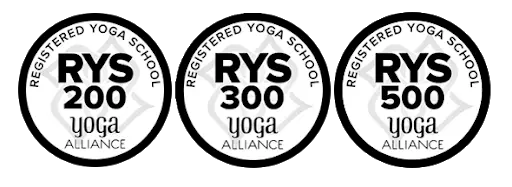
Why Akshat Yogashala is the best for the 200 Hour yoga teacher training in Rishikesh India?
The 200 Hour Yoga Teacher Training Course in Rishikesh India is a Beginner level program that aims to start your yoga journey in the most promising way.
For such an important course, it is necessary to join the school which is best in all aspects. Akshat Yogashala is a registered yoga school in Rishikesh.
The location makes it a prime choice to choose for yoga practice again and again. Apart from the location, the teaching and working staff ensure make your journey, a memorable one.
The syllabus and the curriculum are completely based on Yoga Alliance standards, adding another reason to join Akshat Yogashala.
To make the practice modern, Akshat Yogashala never changes the core of yoga.
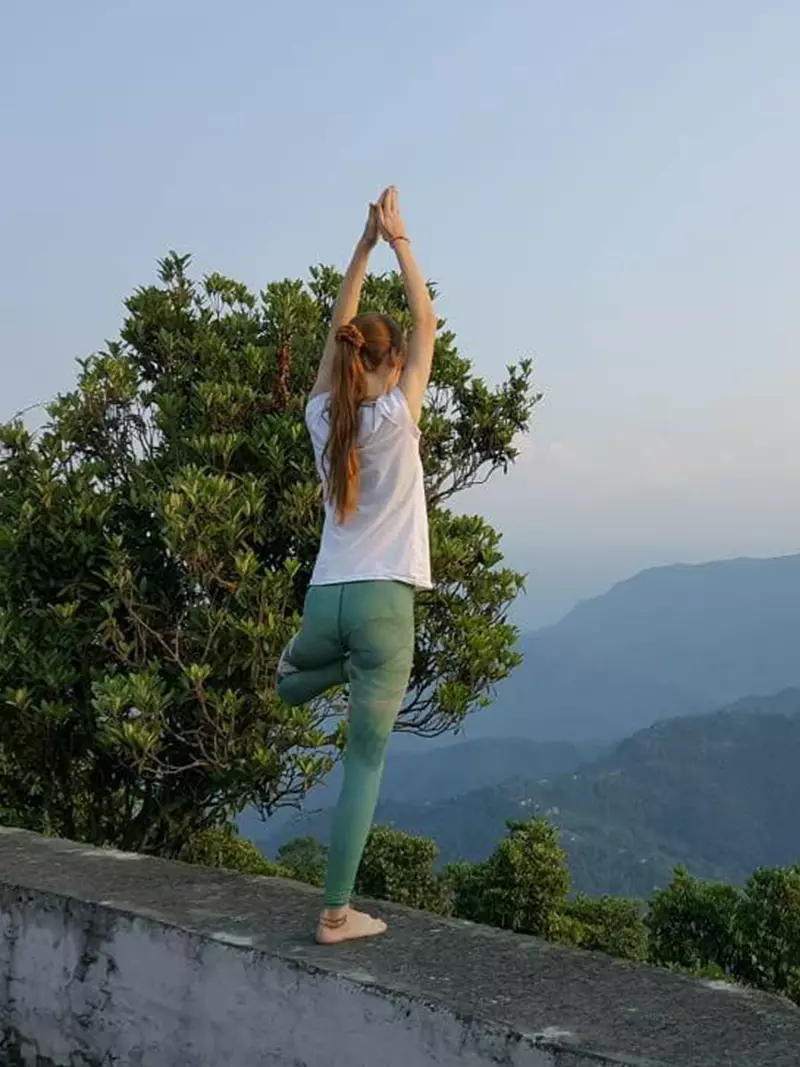
Upcoming 200 Hour Yoga Teacher Training cost in Rishikesh India 2022 – 2023
200-hour yoga teacher training Fee and Dates
| Course Date | Shared Fee | Single Fee | Payment | Book Now |
|---|---|---|---|---|
| 02 Feb to 25 Feb 2023 | ||||
| 02 Mar to 25 Mar 2023 | ||||
| 02 Apr to 25 Apr 2023 | ||||
| 02 May to 25 May 2023 | ||||
| 02 June to 25 June 2023 | ||||
| 02 July to 25 July 2023 | ||||
| 02 Aug to 25 Aug 2023 | ||||
| 02 Sept to 25 Sept 2023 | ||||
| 02 Oct to 25 Oct 2023 | ||||
| 02 Nov to 25 Nov 2023 | ||||
| 02 Dec to 25 Dec 2023 | ||||
| 05 Jan to 28 Jan 2024 | ||||
| 02 Feb to 25 Feb 2024 | ||||
| 02 Mar to 25 Mar 2024 |
Student Testimonial
Yoga Teacher Training Student’s Review
We conduct yoga teacher training in Rishikesh, Goa, and Kerala. We get lot of love and belief from students. These reviews by our ex-students are an example of this.
Our Teachers
Akshat Yoga Shala has a respected staff of experienced yoga gurus in Rishikesh. They transformed the lives of the many enthusiasts turned yogis? The wisdom and deep knowledge of the teachers will help you discover the light and positivity. Start your peaceful journey on a spiritual path with the enlightened teachers or your guides.
Yoga Teacher Training Retreats FAQ
Breakfast will typically have two fruits, fruit juice (packaged) and upma/poha/porridge/sprouts/idli. You will typically have one portion of dal, vegetable curry, chapatis, and rice, along with yogurt, during lunch and dinner.
Getting a visa for India is easy. You can apply online for an electronic visa (evisa), which generally gets approved within 24 -96 hours.
Yes, some rules help create a sattvic (yogic) environment. Trainees in residence are not allowed to consume drugs, eggs, meat, alcohol, and tobacco. No PDA allowed. Students will be asked to leave the course without warning if found to be breaking these rules
Yes, indeed, you would get opportunities to teach your fellow trainees under the supervision of a senior teacher.
Yes, our school registration id is 389001
https://www.yogaalliance.org/SchoolPublicProfile
CHECK-IN – Please arrive anytime on 1st day during daylight hours
CHECK OUT – CERTIFICATE DISTRIBUTION on the last day of the program at 11.30 am. Ideally, you should check out this day.
1. Bug spray/bracelet (might not be required)
2. Personal Toiletries
3. Any medications
4. Indian Mobile sim – can be bought in Delhi or Rishikesh
5. Fees in cash (INR). USD and Euro are also accepted with 1% and 1.5% exchange fees, respectively
Akshat Yogashala, a registered yoga school in Rishikesh offers an RYT (Registered Yoga Teacher) certification.
15 to 20 students in a single batch
The different course has different fee structure. The fee for 200 hours fees 1199$.
The 200 Hours Yoga Teacher Training Course can be opted for by practitioners of all levels. It is of 24 days. The 300 Hours YTTC is an intermediate-level course and can be joined by students who are already qualified with a beginner’s degree. While the 500 Hours Yoga Course or the Master Level course combines the teaching of the 200 and 300 hours and makes you aware of the practice from the root to the tip.
The certification of 200 Hours Yoga Course is enough to teach yoga but this is also true that there is no limit to gaining and learning
180 Hours in class and 20 Hours for self-study.
Rishikesh, an ancient city is also found mentioned in spiritual Hindu texts and Vedas with different names. Since ages ago, people are opting for this destination for getting peace and salvation. Moreover, the most pious rives in INDIA, The Ganges flows here in this city making the place pious and divine. The atmosphere of Rishikesh is perfect if you are wishing to do yoga or other spiritual activities.
As said earlier, 200 Hours Yoga TTC is a beginner-level course, so, that clearly means you can become a yoga instructor with any prior qualification. Just your honest and hard dedication is required during the yoga course tenure.
Everything depends on your personal choice but if you wish to practice yoga with ease and certification, then we suggest you join Akshat Yogashala in Rishikesh.
500 Hours Yoga Teacher Training Course
Join any of the Yoga Alliance-affiliated courses from a registered yoga school in Rishikesh. After the successful completion of it, you can then start working as a yoga instructor. 200 Hours Yoga TTC is the most preferred course among the registered courses offered by yoga schools in India.
No, all yoga certifications are not the same. The difference occurs in the course duration and affiliation.
The 200-Hour Yoga Teacher Training in Rishikesh is for beginner-level students who want to start their journey. With this, you can start your learning even without any prior knowledge or experience. So, if you are never aware of yoga or its various aspects then there is no need to worry as you can go on the journey from a novice to an experienced learner.
RYT or Registered Yoga Teacher certification allows you to teach in a yoga school. You will get an RYT certificate only when you complete a course from a Yoga Alliance-registered yoga school.
The Yoga Teacher Training 200-Hour in Rishikesh is for beginner-level students who want to start their journey. With this, you can start your learning even without any prior knowledge or experience. So, if you are never aware of yoga or its various aspects then there is no need to worry as you can go on the journey from a novice to an experienced learner.
